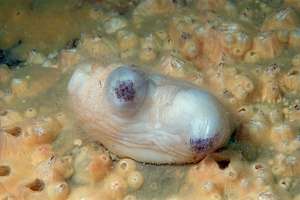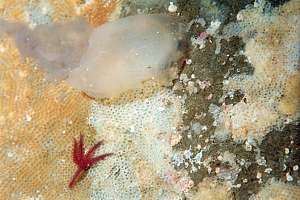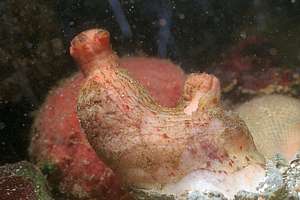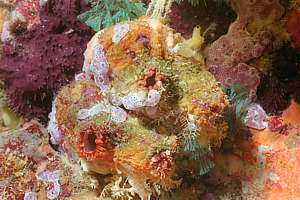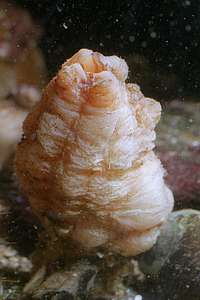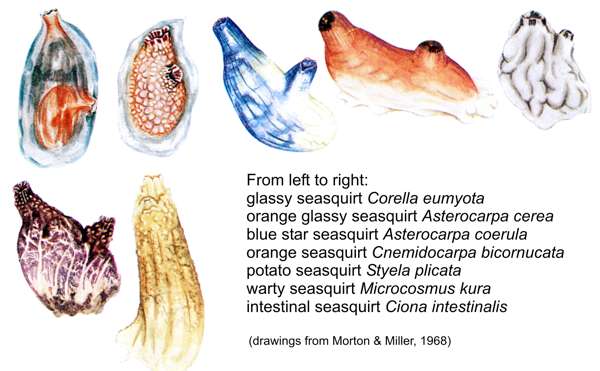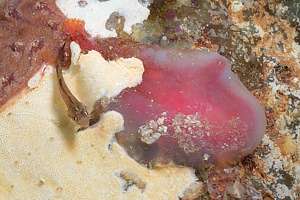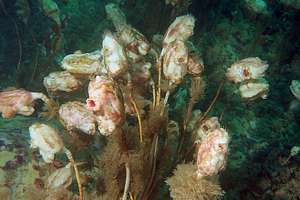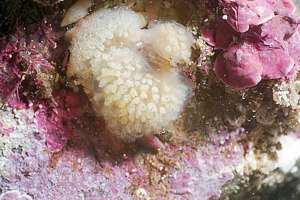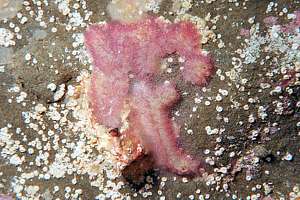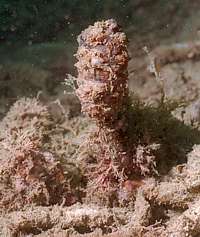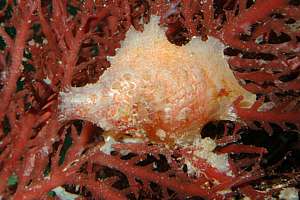 0704120: the waxy seasquirt (Asterocarpa cerea) is
small, transparent, pear-shaped and cream or brownish in colour, with a
pinkish tinge. Its two siphons are lined in brown/wite. Inhalant siphon
on lef, exhaland in middle, showing brown/white lines.
0704120: the waxy seasquirt (Asterocarpa cerea) is
small, transparent, pear-shaped and cream or brownish in colour, with a
pinkish tinge. Its two siphons are lined in brown/wite. Inhalant siphon
on lef, exhaland in middle, showing brown/white lines. |
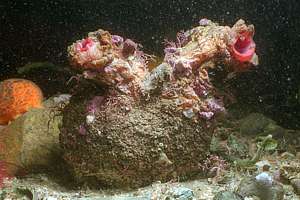 f052214: the warty seasquirt (Cnemidocarpa nisiotus)
although orange-brown in colour, is well hidden as it allows itself to
be grown over by other organisms, like algae and anemones. Its siphons
are pink/white. The above seasquirt lives in an aquarium.
f052214: the warty seasquirt (Cnemidocarpa nisiotus)
although orange-brown in colour, is well hidden as it allows itself to
be grown over by other organisms, like algae and anemones. Its siphons
are pink/white. The above seasquirt lives in an aquarium. |
